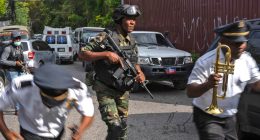Large numbers of cetaceans are dying from lethal collisions with vessels, even in protected areas. Now science may provide the means to protect them
Janie Wray could tell there was something horribly wrong from the way her colleague gasped. They were on a research station off the coast of British Columbia and Wray’s colleague was watching live drone footage through a pair of goggles. “She just went, oh my God,” says Wray.
She had spotted a humpback whale on its migration south, swimming without the use of its tail. Wray and her colleagues at BC Whales crowded around a computer screen to watch the footage. “Immediately, we all knew that we had a whale that most likely had a broken back,” she says. It was almost certainly the result of a ship strike. Later, they discovered it was a whale they knew: Moon.



